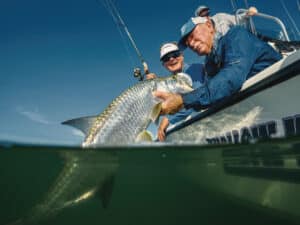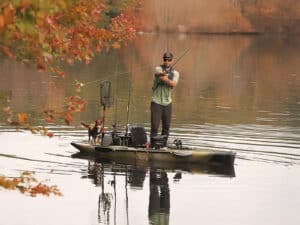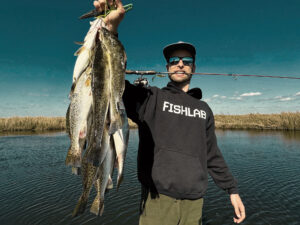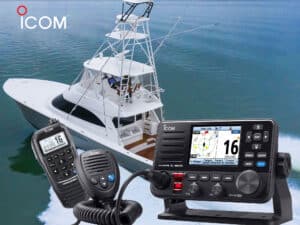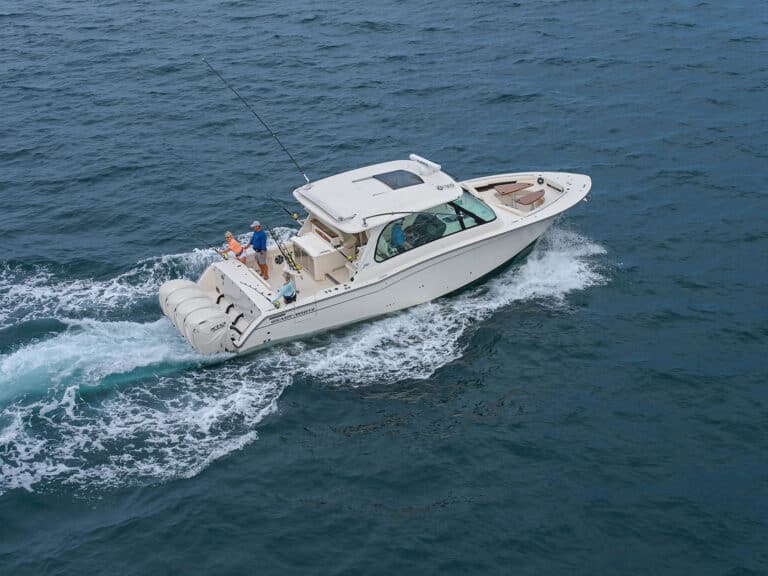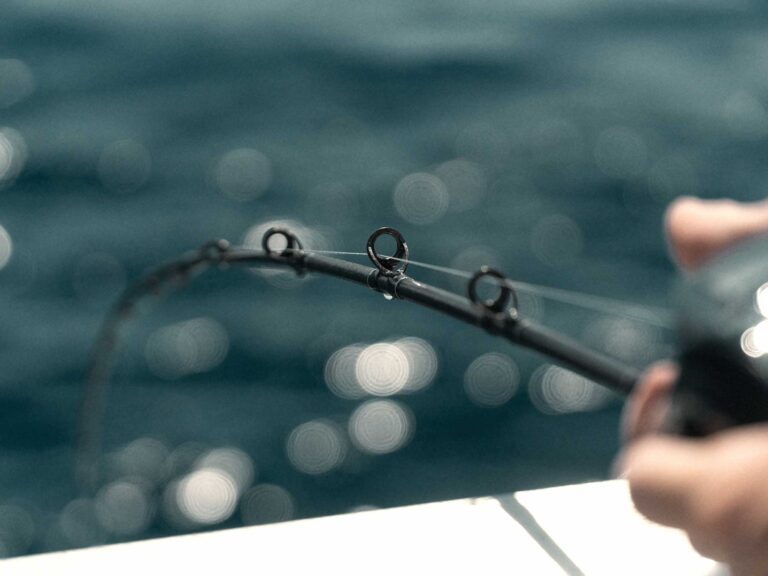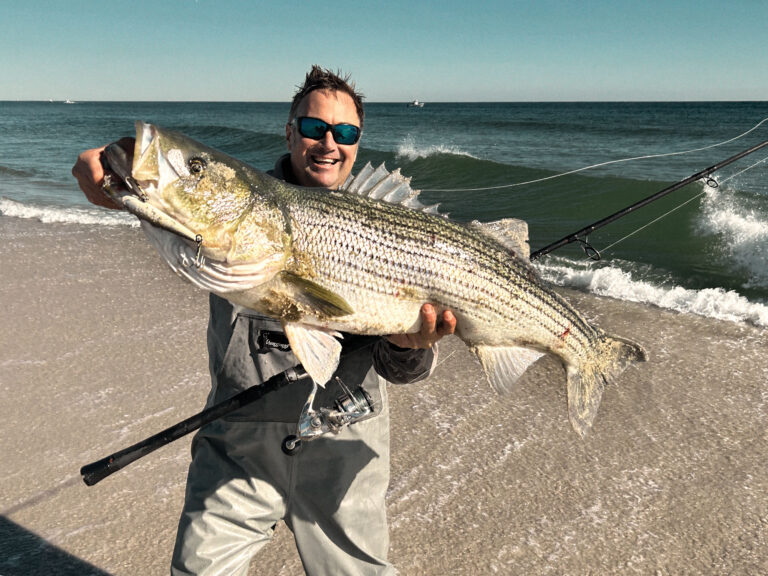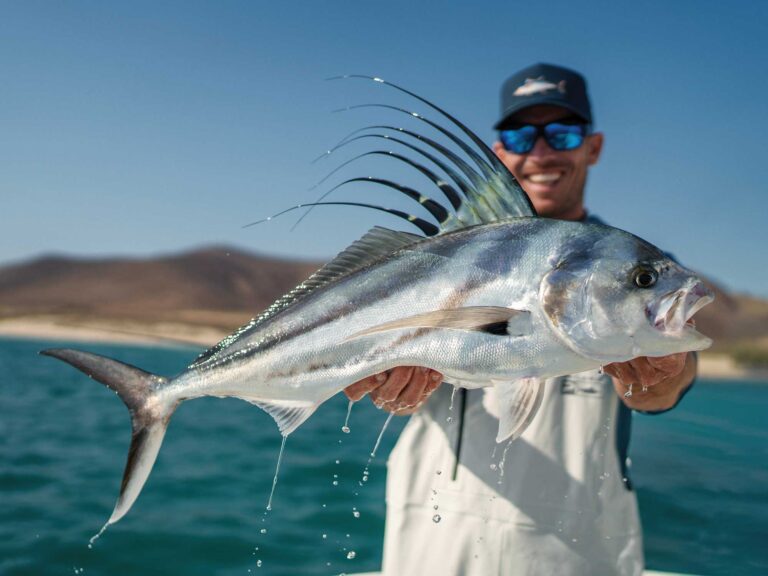
The strong push of a falling tide buffeted the bow as Mike Hayes powered his Pathfinder to where a creek opened into a bay. Ahead, a cluster of docks jutted off a point, and I knew that was where we were headed.
The water was a cool 52 degrees F, just right for spotted seatrout in north Florida, and jigs were our weapons of choice.
Switching from combustion to electric power, Hayes worked the skiff — into the tide for best control — within casting range of the nearest dock. His first cast landed beyond it, and he’d barely had time to engage the reel when he snapped his rod into a tight bend. A few minutes later, I netted his chunky 3-pound trout. Soon Hayes and I were both casting around the same dock. While I drew a blank, he hooked another good trout, then a redfish and a flounder. This is pretty much the way things went for the better part of an hour: He caught fish and I manned the net.
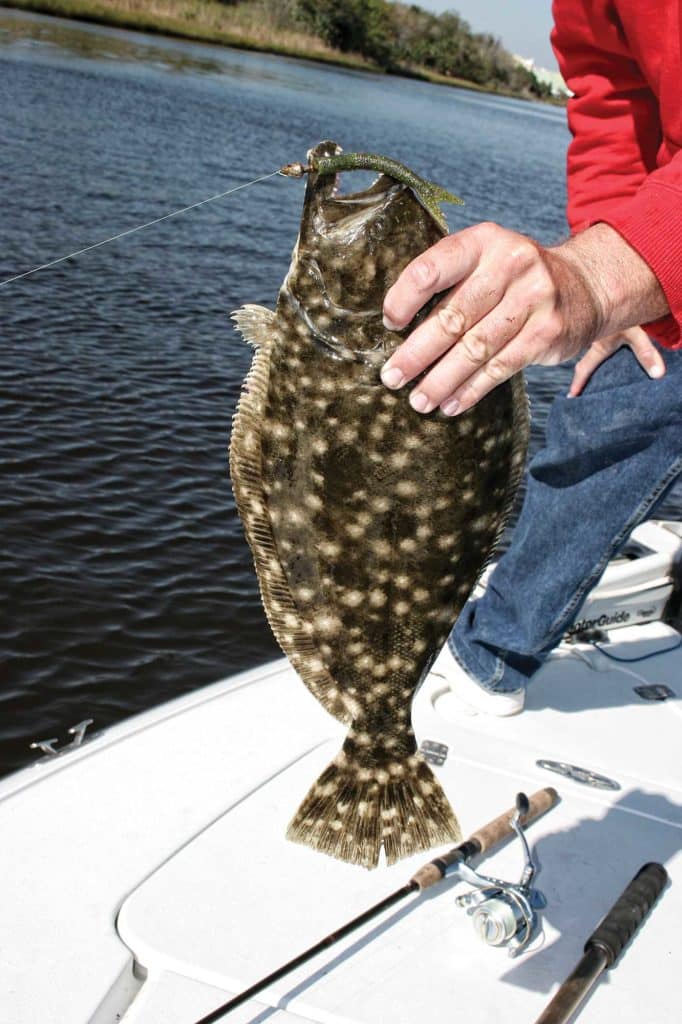
One-Sided Results
I switched to the same soft-plastic grub tail, cast to the same spots, and even made sure our braided lines and fluorocarbon leaders were identical. I also mimicked Hayes’ retrieve cadence. But the catch numbers remained tremendously one-sided. Finally, it hit me. I’d overlooked the obvious.
“You’re using a 1⁄8-ounce jig. I’m throwing a ¼-ounce,” I said sheepishly.
“Uh-huh,” he replied. “It’s all about the way the lure falls, especially in winter.”
The small difference in jig weight proved huge to the fish. In that cool winter water, they clearly preferred a slower drop. My ¼-ounce jig was plummeting too fast, so I made the switch to a lighter jig head and immediately started catching fish. That lesson in jig-fishing finesse is one of many I’ve learned over a lifetime of casting lead heads in inshore waters.
In this era of abundant fishing gear, the lead-head jig gets lost like a tiny seed in a just-cut wheat field. Yet in inshore angling, few lures are as versatile and as productive. Of course, the design, size, weight, and how the jig is dressed — with feathers or fur, or tipped with a soft-plastic or natural bait — determine the lure’s effectiveness for a specific application.

Head-Design Distinction
When it comes to dock fishing, round or ball-type jig heads are decidedly better for casting and skipping far beneath the docks, where fish often reside. Jigs with irregularly shaped heads do not skip true, often caroming to one side or another or not skipping at all. Ball-head jigs also are superb when slow-tumbled in a running tide. Often, big fish feed under smaller fish working baitfish on top. A ball-head jig (weight determined by depth and current) cast well up-current of the surface commotion, and allowed to hit bottom and tumble or roll with a tight line (without imparting action), often is picked up by the bigger fish. Jigs of the wrong weight or head design, however, do not tumble naturally along the bottom, so they’re less effective.
With lightweight ball-head jigs, this tumbling tactic works in shallow water for redfish, trout, and around dock lights for night snook. Heavier ball heads work great in deeper water for schooling stripers and blues in 15 to 30 feet. There again, the bigger fish are on the bottom, below the surface-feeding schoolies, gorging on wounded baitfish ravaged by the smaller predators. Rolling a jig along the bottom perfectly imitates the dead or injured baitfish that those larger fish are claiming deep.

Beyond Basic Shapes
Modern jig-head designs include slanted, keeled, bullet-shaped, coin-shaped, oval-shaped and other variations too numerous to list. In many coastal areas, small lure makers produce region-specific jig designs — often improvements on basic styles — that excel at fishing certain areas or situations, so they should not be overlooked. Cases in point are the Red Tail Hawk, designed for snook, and Doc’s Goofy Jig, made in Largo, Florida, specifically to target pompano.
Obviously, the weight and shape of a jig are vitally important. Flat or coin-shaped jigs sink slowly and are more resistant to underwater snags. Bullet, ball, keeled and bean-style jig heads sink quickly but are more prone to fouling. Water depth and possible snags must be taken into account when determining the proper shape and weight of a jig. For example, it’s smart to use lightweight jigs with flat heads in shallow or weedy water, which is why many bonefish and permit jigs, like the famed Wiggle and Skimmer jigs, are of this design. By contrast, in deeper rivers, sounds and bays, where fish are deep and snags few, heavy jigs with bullet, ball, bean or keeled heads are best.
Wise anglers choose jigs for the fishing at hand. So-called stand-up jig heads are a good example. They’re elongated, with a tapered nose and a flat bottom, and keep the hook positioned upward once it hits bottom, making it easier to hook reds, flounder and other bottom feeders solidly. This design also makes for fewer snags, particularly with a buoyant jig dressing such as a soft plastic or bucktail.
Some narrow-profile stand-up jigs, like Egret’s Beer Belly model, are especially snagless because the tapered, narrow head slips through snags and tangles astonishingly well. I had a couple of very successful mornings using this style of head on Louisiana redfish that had pushed far back into coastal canals to feed on crabs and small baitfish. Long casts parallel to the grass along canal edges were needed, and the Beer Belly jigs did well, ferreting through weedy snags.

2.) Smaller school fish often push the baitfish toward the surface.
3.) Many dead and wounded baits sink past the surface action, where bigger fish pick up the pieces.
4.) A heavy ball-head jig allowed to roll on the bottom with the current drifts into the active feeding zone of larger fish. Illustration by Steve Sanford
Bottom Grubbers
In some cases, dragging lures across bottom is most productive. For this task, so-called football jigs, popular with freshwater bass anglers, are ideally suited. This jig style is deadly in salt water and perfect for wobbling across tidal creek and bay bottoms. The head looks like a football — hence the name — and the jig incorporates a wide-gap hook fitted to protrude upward when the lure is at rest or pulled across the bottom. When retrieved, the football jig head pushes along, moving in a side-to-side fashion. This unusual design works well over shells, pebbles, mud and other debris-laden bottom without fouling. Many football-style jigs come with a weed guard, usually a stiff nylon-brush type, which can be cut off if desired.
A close facsimile, D.O.A.’s popular and proven TerrorEyz, features a dumbbell-shaped head, but because it’s hidden inside a special soft-plastic body, many anglers are unaware of the jig-head shape, which waddles over bottom extremely well. And thanks to its extra-strong hook, I’ve taken tarpon as big as 100 pounds on the TerrorEyz.

Another favorite bottom thumper is the boxing-glove jig, so named because the head is shaped like a boxing glove, with a blunt and turned-up rounded nose. These jigs slide over rubble and shells with ease. The best ones also have wide-gap hooks — some even circle hooks — which are sure to barb marine fish. Wide-gap hooks also come in handy when fitting jigs with bulky soft-plastic bodies or adding natural baits like crab, shrimp and finger mullet, since there’s plenty of clearance for the exposed hook point to lodge in a fish’s mouth.
Jigs are not magical lures, and jigging isn’t always a fast sport. But with patience and some experimenting, you’ll soon learn to pick out the right jig for every target species and situation, and you’ll develop the rhythm and the touch that enables you to consistently catch fish. When it all comes together, you’ll discover that there is nothing more deadly than a simple ol’ lead head.

Bullet/Arrow
Sink Rate: Fast
Purpose: Deep channels, coastal creeks or rivers; residential canals, inlets or passes with fast-moving water.
Dressing: Bucktail; nylon skirts; soft plastics like slender baitfish bodies, curly tails, shrimp tails or paddletails; live shrimp or thin strip baits.
Round/Ball
Sink Rate: Medium fast
Purpose: On or near the bottom in fast-water spots littered with oysters, rubble, rocks, submerged stumps, roots or pilings.
Dressing: Bucktail; soft plastics like curly tails, paddletails and wider baitfish bodies; live shrimp, small live baitfish, strip baits or bait chunks.
Boxing Glove
Sink Rate: Medium fast
Purpose: On or near the bottom in spots with medium- to slow-moving water, laden with crushed shell, oysters, rubble, rocks, submerged stumps, roots or pilings.
Dressing: Bucktail; soft plastics like curly tails, paddletails and wider baitfish bodies; live shrimp, small live baitfish, strip baits or bait chunks.
Football
Sink Rate: Medium
Purpose: Over sand, mud, crushed shell, gravel or rubble bottom, in spots with medium- to slow-moving water, when it’s cold or when slow presentations are desired.
Dressing: Soft plastics like curly tails, bass tubes, shrimp bodies and crab bodies; live shrimp, strip baits or bait chunks.
Stand-Up
Sink Rate: Medium
Purpose: Over sparse grass, sand, mud, crushed shell or gravel, in spots with medium- to slow-moving water, when it’s cold or slow presentations are desired.
Dressing: Soft plastics like curly tails, bass tubes, shrimp bodies and crab bodies; live shrimp, strip baits or bait chunks.
Skimmer
Sink Rate: Slow
Purpose: On or near the bottom in shallow slow-water spots with sparse grass, sand, mud, crushed shell or gravel.
Dressing: Bucktail; rubber skirts; soft plastics like curly tails, paddletails, shrimp bodies and crab bodies; live shrimp.
Accessorizing Jigs
While bucktail, nylon, Mylar and rubber skirts have their fans, soft plastics are the most popular jig dressings these days. The wide array of shapes, sizes and color schemes enable anglers to customize jigs to mimic the prevailing forage in an area, and provide the desired action or sink rate for a particular circumstance or target species. Veteran anglers carry an assortment of jig heads (different weights, shapes and colors) and soft-plastic bodies — some scented, like those by Gulp!, Exude and Fishbites — to mix and match. Some folks are adamant about using rattling lures, claiming they attract fish. A Texas coast favorite, the Rockport Rattler, gained favor for its effectiveness. Sadly, it’s available only in weights of 3⁄8 ounce and less, but D.O.A. Lures makes glass rattles to insert in soft-plastic bodies and add an enticing clicking to any jig. “They sound like snapping shrimp, and every fish inshore hears that as a dinner bell,” says Capt. Jim Anderson, of Fruit Cove, Florida.
Stealth Mode
Overhanging structure, such as foliage, brush and especially docks, provides a safe haven and productive feeding for a variety of inshore game fish. Skipping your lure into the strike zone is a challenge, but the right jigs offer the upper hand. Round or ball-type jig heads skip best.
Crawl Space
Bottom littered with obstructions and snags offers promising habitat. A stand-up-style jig head, which keeps the hook elevated, allows you to hop the lure over such obstructions with far less chance of hanging up.

